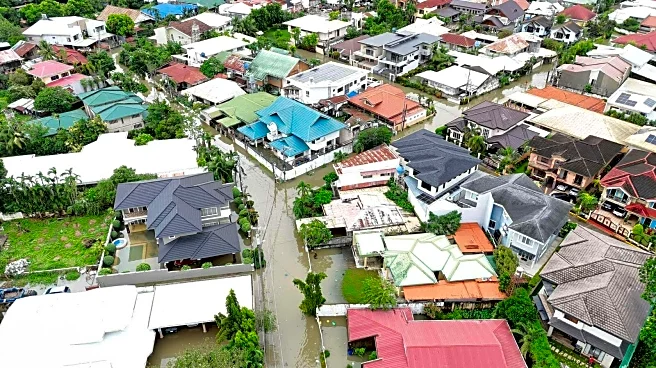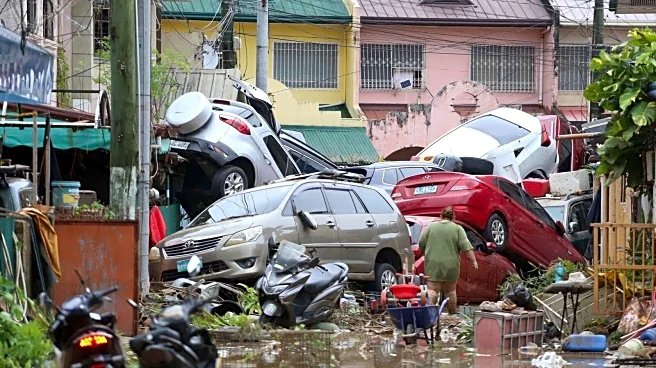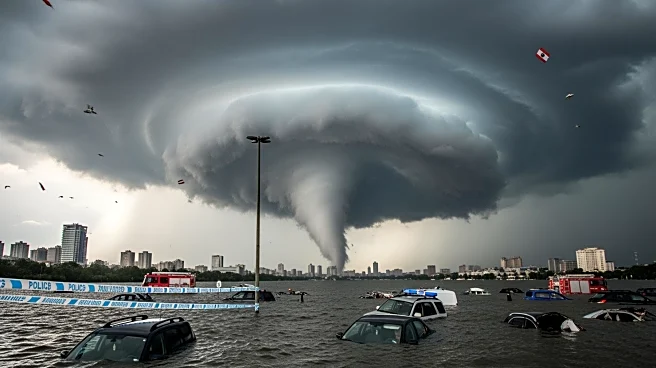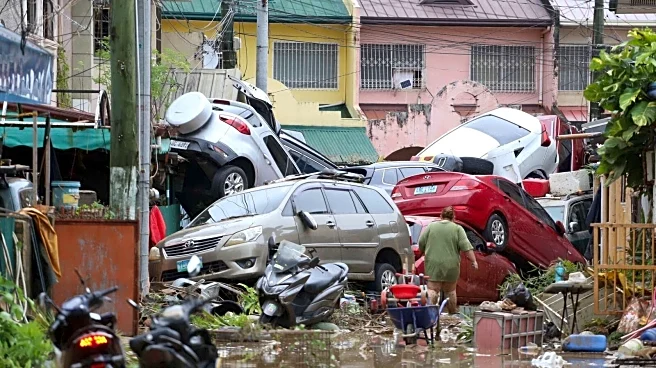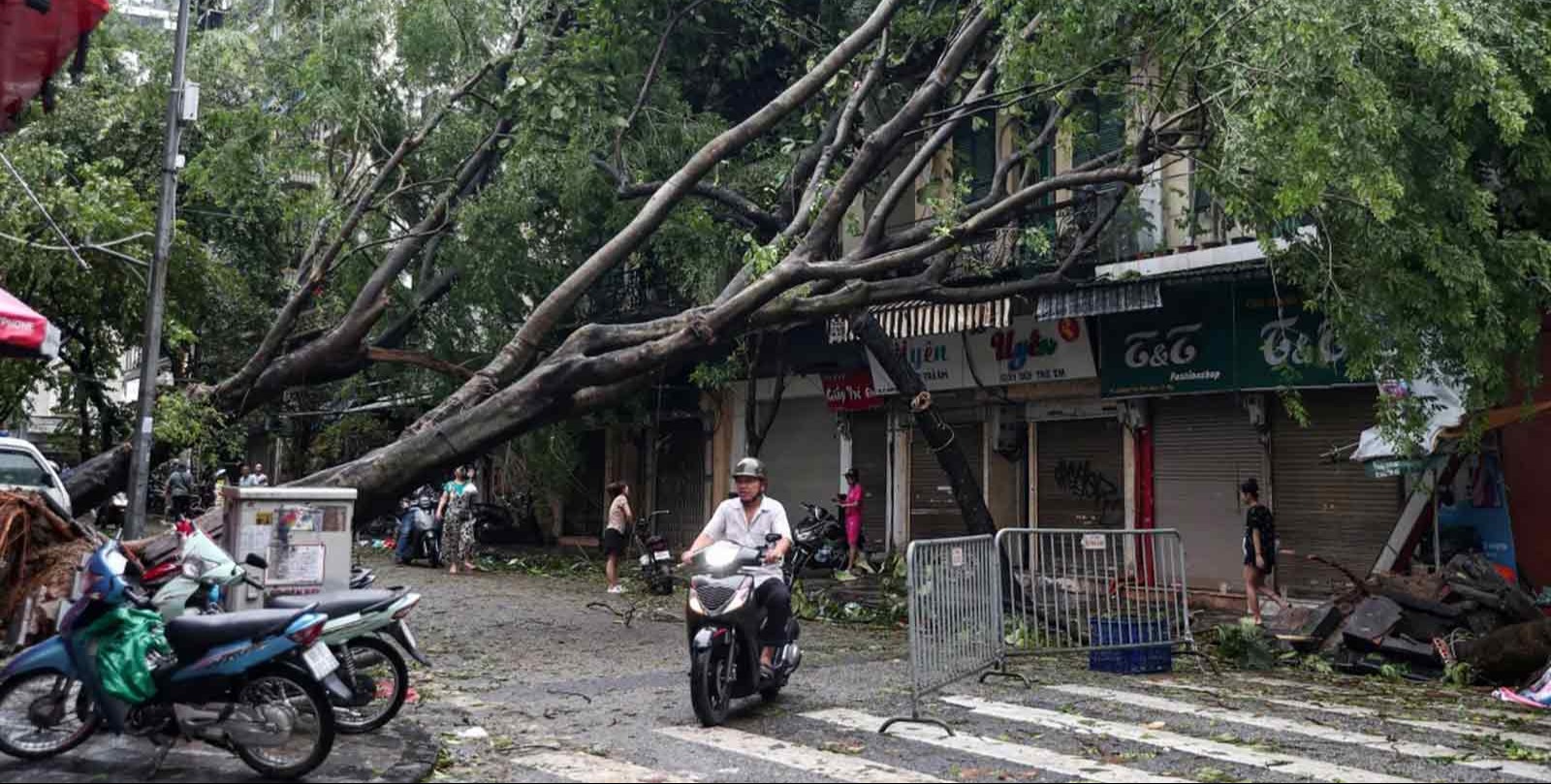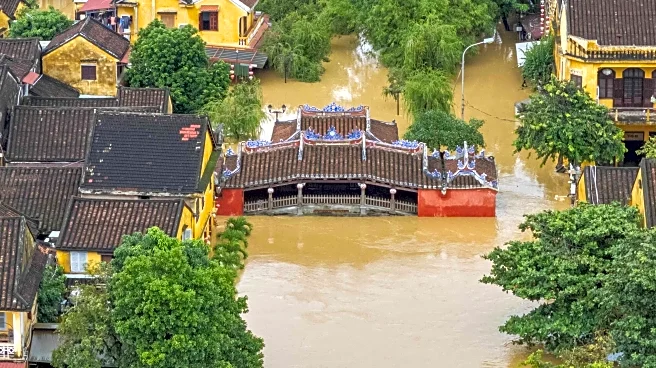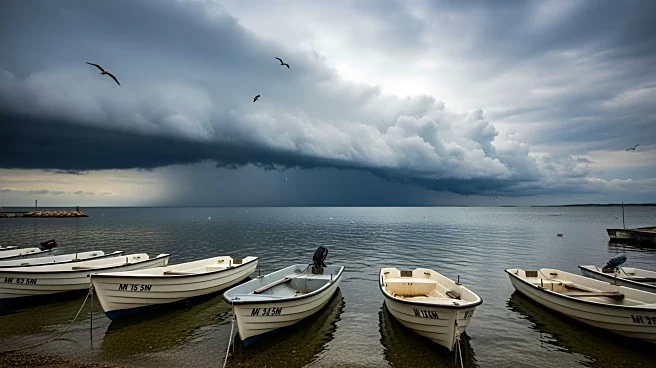What's Happening?
Typhoon Kalmaegi has caused widespread devastation in the central Philippines, resulting in at least three deaths and forcing hundreds of thousands to evacuate. The typhoon, which struck the island of Cebu,
has led to severe flooding, with entire towns submerged and people seeking refuge on rooftops. The Philippine Air Force reported that a military helicopter deployed for relief efforts crashed in northern Mindanao island, with the status of the crew currently unknown. The typhoon, locally named Tino, has weakened but continues to bring strong winds and heavy rains as it moves across the Visayas islands.
Why It's Important?
The impact of Typhoon Kalmaegi highlights the ongoing challenges faced by the Philippines in dealing with natural disasters. The severe flooding and mass evacuations underscore the need for effective disaster preparedness and response strategies. The situation has significant implications for public safety, infrastructure, and the economy, as communities struggle to cope with the immediate aftermath and long-term recovery. The crash of the rescue helicopter further complicates relief efforts, emphasizing the need for robust and resilient emergency response systems.
What's Next?
As the typhoon moves out over the South China Sea, authorities will focus on rescue and recovery operations, assessing the damage, and providing aid to affected communities. The government may seek international assistance to support relief efforts and rebuild infrastructure. There could be increased pressure on policymakers to enhance disaster risk reduction measures and improve the resilience of communities to future climate-related events.


